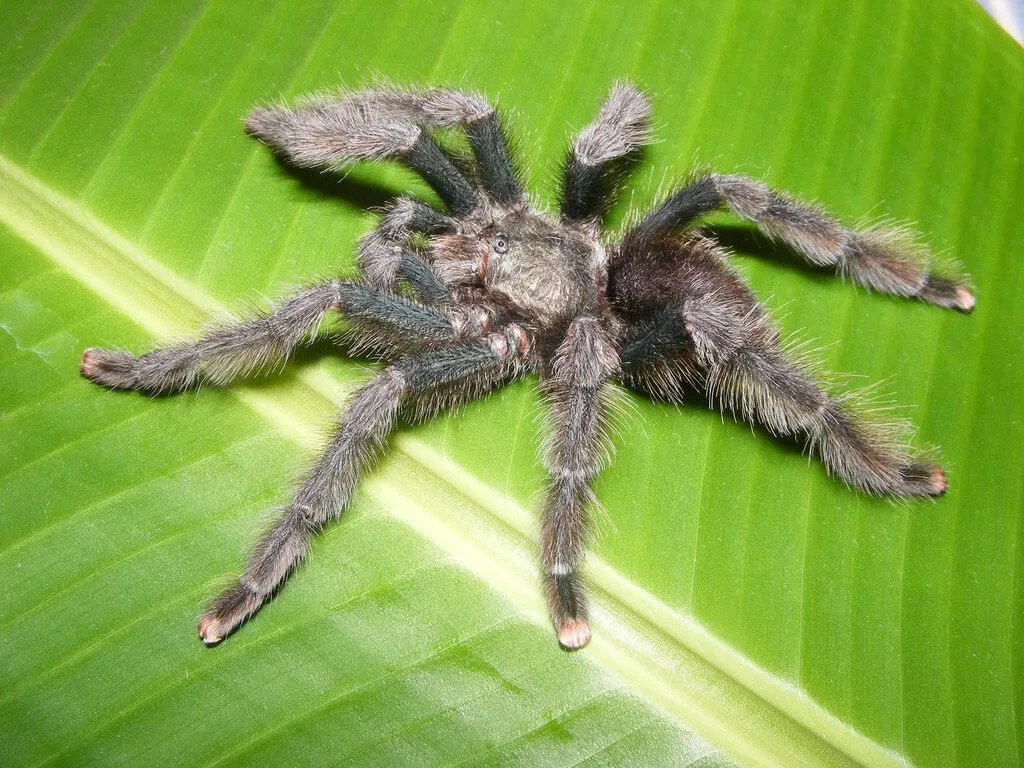The Pink Toe Tarantula Unveiled
The Pink Toe Tarantula, scientifically known as Avicularia avicularia, is a captivating species that has gained popularity both in its native habitats and as a pet. These arachnids are known for their striking appearance and relatively docile temperament, making them a fascinating subject of study and admiration. Understanding the natural world of the pink toe tarantula is crucial for appreciating these creatures and ensuring their survival. This guide delves into various aspects, from their native habitat and physical characteristics to their behavior, conservation status, and care as pets. By exploring these facets, we gain a deeper understanding of these magnificent creatures and how to coexist with them responsibly. The goal is to provide comprehensive information to both enthusiasts and those curious about the pink toe tarantula.
Native Habitat
The pink toe tarantula’s native habitat spans across several regions in the Americas. Their natural environment plays a vital role in their survival and behavior. Understanding where they come from offers insights into their care and preservation. This section explores the geographic distribution and typical ecosystems inhabited by these fascinating creatures.
Geographic Distribution
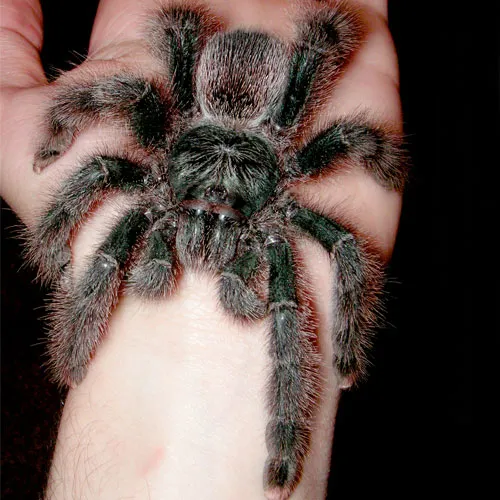
Pink toe tarantulas are predominantly found in the tropical rainforests of South America, particularly in countries like Brazil, Guyana, Suriname, and French Guiana. They also inhabit parts of Central America and some Caribbean islands. This wide distribution across various tropical regions indicates their adaptability and resilience. Their presence often signifies a healthy ecosystem, as they are sensitive to environmental changes. They thrive in warm, humid climates and are well-adapted to life in the trees, a characteristic that distinguishes them from many other tarantula species that live on the ground. The geographical spread also influences variations in their coloration and behavior, depending on the specific local conditions.
Typical Ecosystems
These tarantulas typically dwell in humid, arboreal environments. They are commonly found in the canopies of rainforest trees, where they construct silken retreats. Their preferred habitats include locations with high humidity and temperatures ranging from 75 to 85 degrees Fahrenheit. They often inhabit areas close to water sources like streams and rivers. The vegetation provides ample cover, and the trees offer a secure location for their nests. The pink toe tarantula’s lifestyle is intricately linked with its ecosystem, depending on the forest’s biodiversity. The ecosystem supports a rich insect population, serving as a primary food source for the tarantulas. Understanding the specific ecosystems where they flourish helps to appreciate their ecological role and the need for conservation efforts to protect their habitats.
Physical Characteristics of Pink Toe Tarantulas
Pink toe tarantulas are known for their distinctive appearance, which makes them easily recognizable. Their physical characteristics are not only aesthetically appealing but also play crucial roles in their survival. The following sections detail their size, coloration, and other unique features.
Size and Appearance
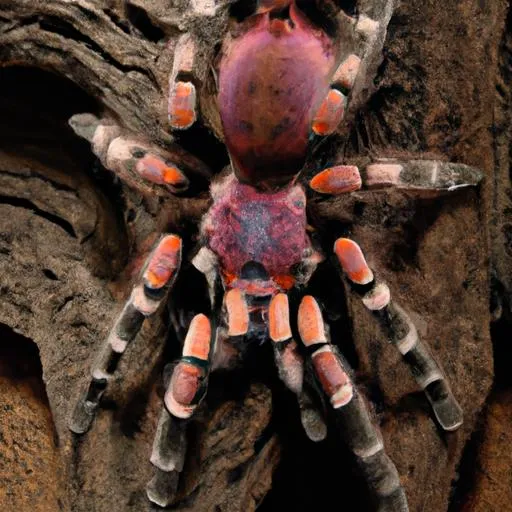
Adult pink toe tarantulas typically have a leg span ranging from 4 to 6 inches (10 to 15 cm). Females tend to be larger than males. Their bodies are compact, with a carapace (the upper shell of the cephalothorax) that is usually dark in color, often a deep gray or black. The abdomen is covered in fine hairs. The most defining feature is the pink or reddish coloration on the tips of their legs, which gives them their common name. This bright coloring contrasts with the rest of the body, making them stand out. The appearance of the pink toe tarantula is a visual treat, making them popular among tarantula enthusiasts. The size and appearance of the tarantula can also vary based on their age and the specific conditions in their habitat.
Coloration and Distinctive Features
The coloration of the pink toe tarantula is a key identifying characteristic. The vibrant pink hues on their feet are their most recognizable trait. The body is often covered in dark hairs, which can range from dark gray to black. They also have distinctive features such as the presence of urticating hairs on the abdomen, which they can flick off as a defense mechanism. The overall appearance of these tarantulas is a blend of beauty and utility, designed to help them survive in their arboreal habitats. This camouflage is essential in their environment, allowing them to blend in with the bark of trees and the surrounding foliage, making them adept hunters and ensuring they remain hidden from potential predators. The combination of these features creates a stunning visual appeal, making them favorites among tarantula keepers.
Behavior and Lifestyle
Understanding the behavior and lifestyle of pink toe tarantulas is essential for their care and appreciation. These arachnids exhibit a range of fascinating behaviors, from their feeding habits to their social interactions. Knowing these aspects provides insights into their needs and the ways they adapt to their environment.
Diet and Feeding Habits
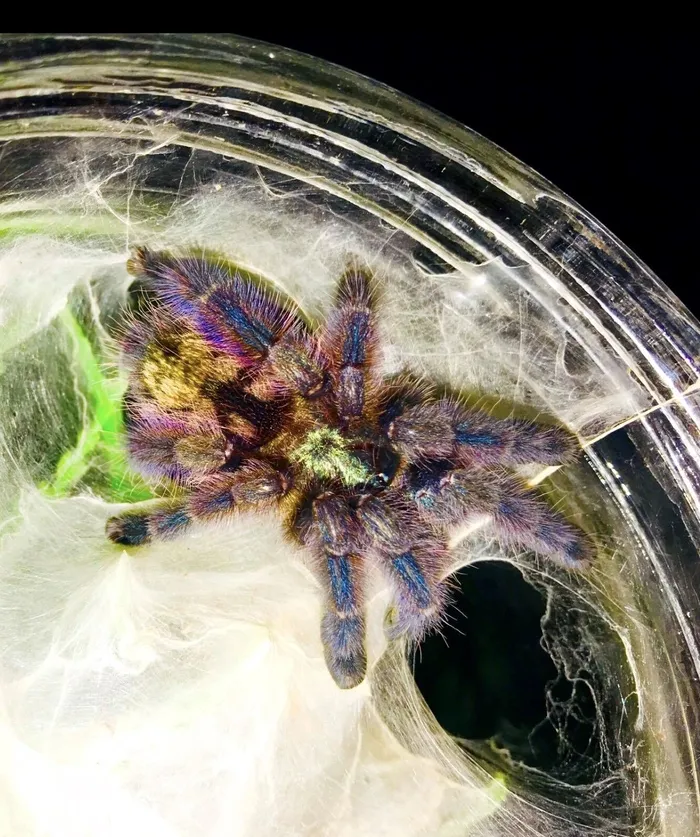
Pink toe tarantulas are primarily insectivores, feeding on a diet consisting mainly of insects. In the wild, their diet includes a variety of insects such as crickets, moths, and other invertebrates they can catch in their arboreal habitats. They are ambush predators, waiting patiently for prey to come within reach. They then use their fangs to inject venom, which paralyzes the prey, after which they begin the feeding process. In captivity, they are typically fed crickets, roaches, and other commercially available insects. The frequency of feeding depends on the tarantula’s age, with younger tarantulas needing more frequent meals than adults. Proper diet and feeding habits are critical for their health and growth, providing them with the necessary nutrients and maintaining their well-being.
Activity Patterns and Social Behavior
Pink toe tarantulas are primarily nocturnal, becoming most active during the night. During the day, they typically hide in their silken nests or in secluded areas of their habitat. These tarantulas are generally solitary creatures, except during mating season. They do not exhibit complex social behaviors like some other species. Their activity patterns are directly influenced by their environment. They build nests to serve as protection against predators and environmental elements. They will typically come out in the late evening or at night to seek out food and search for potential mates. Understanding their activity patterns helps provide them with the right environment, minimizing stress, and maximizing their overall quality of life. The solitude of pink toe tarantulas is also an interesting aspect to consider in their care, as it simplifies the needs for their housing and environment.
Conservation Status and Threats
Conservation is an increasingly important aspect of wildlife management, including species like the pink toe tarantula. Identifying the threats to their survival and understanding conservation efforts is key to preserving this species and their natural habitats. This section provides insight into the various challenges faced by pink toe tarantulas.
Major Threats in Native Habitats
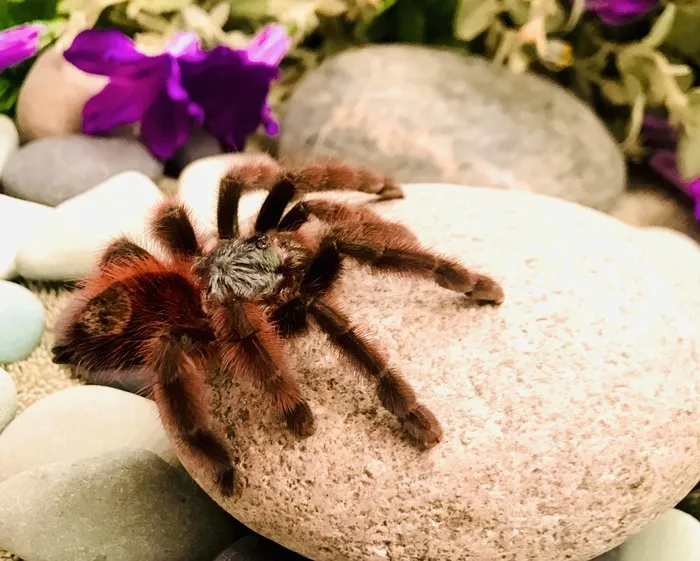
Pink toe tarantulas, like many species, face several threats in their native habitats. Deforestation is a major concern. The destruction of rainforests reduces the habitat available for these tarantulas, limiting their ability to find food and shelter. Habitat loss is driven by logging, agriculture, and urbanization. Other threats include the pet trade, where wild-caught tarantulas are collected for sale, which can significantly impact local populations. Climate change also presents a challenge, as altering weather patterns and temperatures disrupt the ecosystem. Protecting these tarantulas requires addressing these threats and working to preserve their environment and way of life.
Conservation Efforts
Various conservation efforts are underway to protect pink toe tarantulas and their habitats. These include initiatives to reduce deforestation, promoting sustainable forestry practices, and establishing protected areas where the tarantulas can thrive undisturbed. Anti-poaching measures also help to limit the capture of wild tarantulas for the pet trade. Many organizations focus on educating local communities about the importance of conservation and the value of biodiversity. The success of these efforts depends on collaborative strategies. These encompass government agencies, conservation organizations, and the public all working to preserve the tarantulas and their rainforest home.
Pink Toe Tarantulas as Pets
Pink toe tarantulas are popular pets due to their beautiful appearance and relatively docile nature. However, responsible pet ownership is essential. Creating a suitable habitat and providing proper care is vital to ensuring their well-being. The following sections cover aspects of pet ownership.
Responsible Pet Ownership
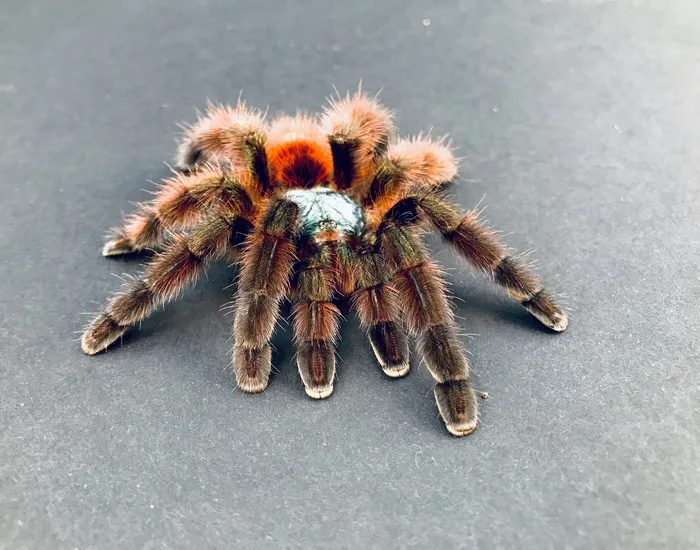
Responsible pet ownership begins with thorough research on the needs of the species. Before acquiring a pink toe tarantula, you should understand their specific requirements. This includes their habitat, diet, and environmental needs. Finding a reputable breeder or source is critical to ensure you get a healthy tarantula. Providing a proper environment minimizes the risk of health problems, guaranteeing a good quality of life. Responsible owners are committed to the tarantula’s care and providing all its essential needs. This commitment ensures a positive experience for both the pet and the owner, fostering a fulfilling relationship.
Creating a Suitable Enclosure
A proper enclosure is crucial for the health and well-being of a pink toe tarantula. The enclosure should be appropriately sized, at least three times the tarantula’s leg span in width. It should be tall enough to accommodate the arboreal lifestyle of this species. Provide a substrate like coco fiber or vermiculite to maintain humidity, which is essential for the tarantula’s health. Include decorations like branches, cork bark, and artificial plants to create hiding places and simulate their natural habitat. Maintain the enclosure’s humidity levels by misting it regularly, but be sure not to over-saturate it. Provide a shallow water dish for drinking. The appropriate enclosure helps the tarantula thrive, leading to a happy and healthy pet.
Providing Proper Diet and Care
Feeding pink toe tarantulas with a balanced diet is a key part of their care. The primary food source includes insects like crickets, roaches, and mealworms. The insects should be gut-loaded (fed nutritious food) before being given to the tarantula to provide a balanced diet. Feed the tarantula one or two times a week, depending on its age and size. Provide fresh water at all times. Regularly remove uneaten food and waste to maintain cleanliness. Monitoring your tarantula’s molting cycle is also important, as it indicates growth and health. Handling should be kept to a minimum, as it can be stressful for the tarantula. Regular care and attention to the tarantula’s needs ensures its health and longevity.
Health and Common Issues
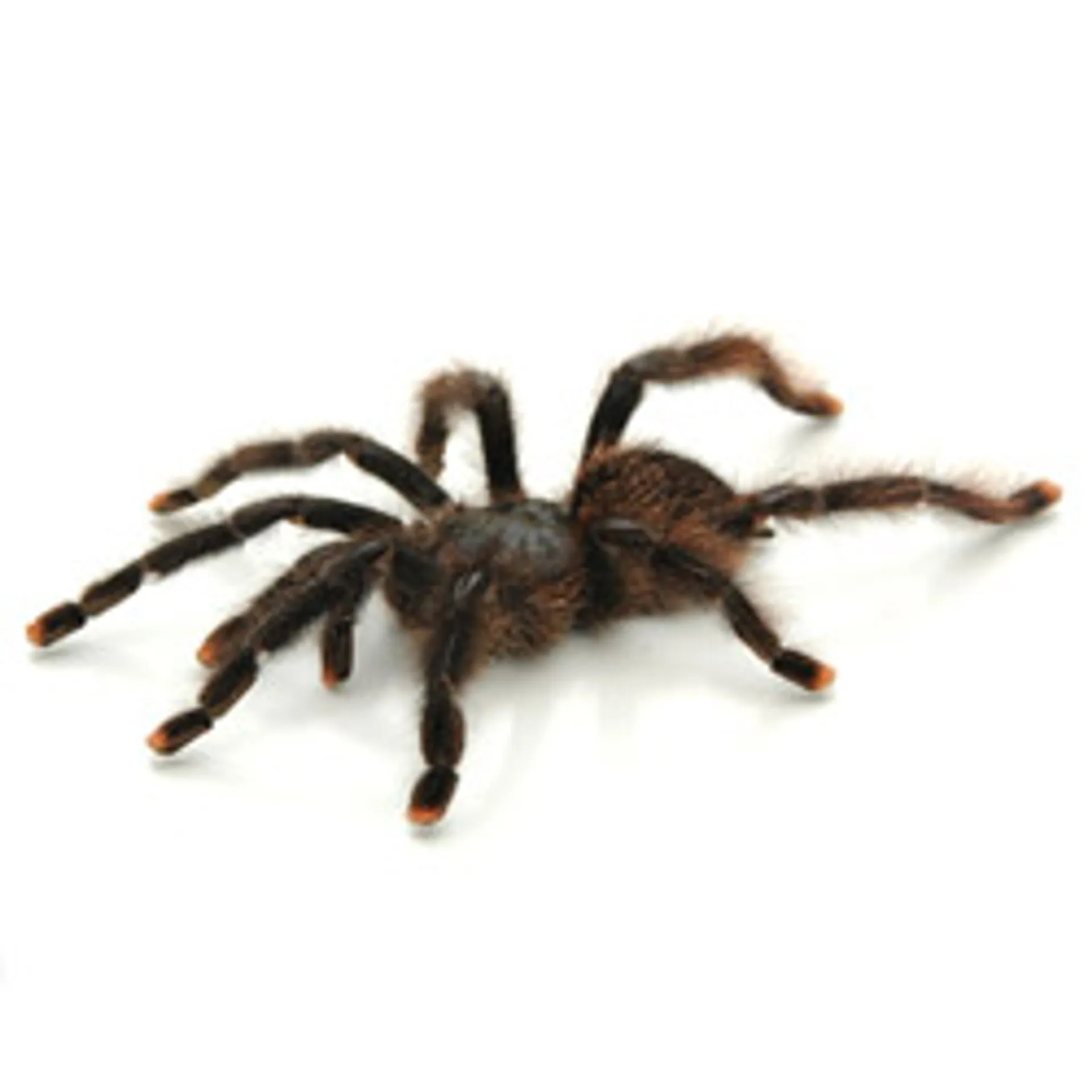
Pink toe tarantulas can be prone to certain health issues. Understanding these issues and taking preventive measures will keep your pet healthy and happy. This section explores common problems and methods to address them.
Preventive Measures and Veterinary Care
Preventing health problems in pink toe tarantulas requires several measures. Maintain the correct humidity and temperature levels in the enclosure. Provide a clean environment to prevent the growth of mold and bacteria. Regularly inspect your tarantula for any signs of illness, such as lethargy, loss of appetite, or unusual behavior. Consult an experienced veterinarian if you suspect any health problems. A vet specializing in exotic pets can diagnose and treat various tarantula health issues. Early detection and prompt treatment are essential for successful care and well-being of your pink toe tarantula. Knowing what to look for and how to respond can ensure a longer life for your pet.
